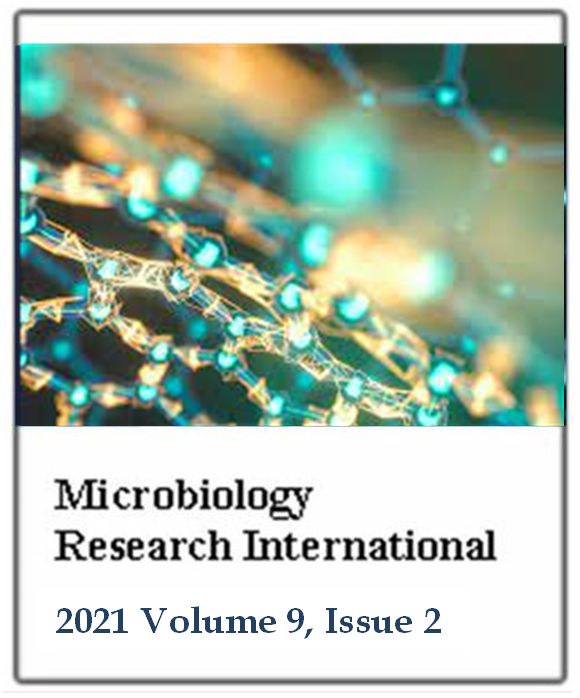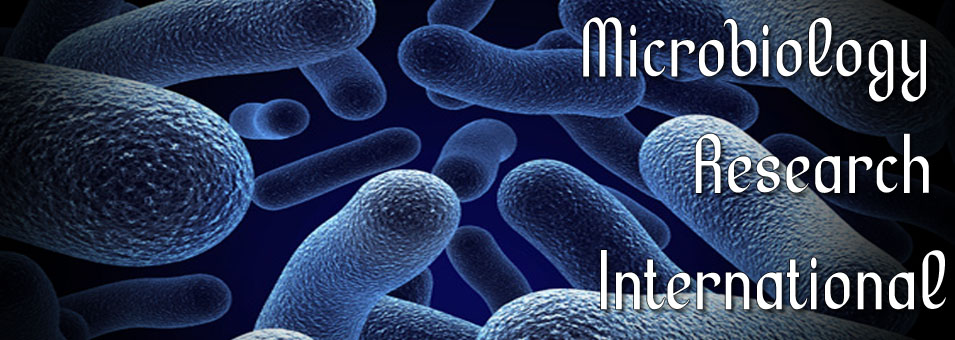Antibiotic resistance in heavy metal resistant non-lactose fermenting Enterobacteriaceae colonies cultured from textile industry effluents
Afroza Parvin, Papon Debnath, Md. Mahmudul Hasan, Rokunozzaman, Md. Ashraful Hasan, Mohammad Mahfuz Ali Khan Shawan, Md. Mozammel Hossain, Md. Nazibur Rahman, Md. Ibrahim Khalil and Sohel AhmedMicrobiology Research International
Published: June 3 2021
Volume 9, Issue 2
Pages 21-39
Abstract
Many of the aquatic pathogenic microflora belong to the non-lactose fermenting (NLF) Enterobacteriaceae and emergence as well as the spread of antibiotic resistance in them is now a serious threat to public health worldwide. Growth of textile industries has heavily flourished acting as hub for the ready-made garments factories in Bangladesh. Textile industry effluents may contain heavy metals and it is not clear whether their disposal is strictly monitored or not and their impact on the aquatic microflora have not been properly investigated and monitored. To assess the impact of heavy metals on the emergence and spread of antibiotic resistance in NLF Enterobacteriaceae, samples were collected from four different locations of drains running down effluents from five (n=5) different textile industries located in Savar, Dhaka, Bangladesh. Total bacterial counts (TBCs), minimal inhibitory concentrations (MICs) of heavy metals, antibiotic susceptibility, binary exposure and plasmid profile experiments were performed. TBCs from day 1 to day 5 revealed that most colony forming units (CFUs) uncountable at 10-6 dilution could be counted at 10-10 dilution. A total of 100 NLF bacterial isolates were categorized as type-1 and type-2 using 4 differential media. The MICs of 100% isolates in both type-1 and type-2 for nickel (Ni), lead (Pb) and chromium (Cr) were 0.6 mM, 0.6 mM and 1.0 mM, respectively. In case of type-1, most (38%) showed resistance to azithromycin (AZM) and least (2%) to cefotaxime (CTX). In case of type-2, most (48%) showed resistance to AZM and least (8%) to CTX. Binary exposure experiments revealed the combined effect of heavy metals and antibiotics. Where in most cases, zone of inhibition increased or remained unchanged. In few cases, zone of inhibition decreased. This finding indicated that the heavy metals typically exert negative or no effects on antibiotic resistance in the isolates tested. Plasmid profiling of the type-1 and type-2 NLF isolates resistant to both the antibiotics and heavy metals revealed that one of the five type-1 isolates contained very large plasmid (14 Kb) and four of the eight type-2 isolates contained 13 Kb plasmids and two contained 12 Kb plasmids. These findings indicated that these isolates possibly possess the ability to sequester metals before being discharged into the soil and/or water environment.
Keywords: Antibiotics, effluents, heavy metals, minimum inhibitory concentration (MIC), resistance.
Full Text PDF
